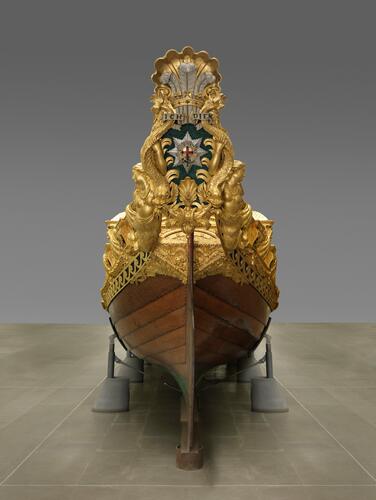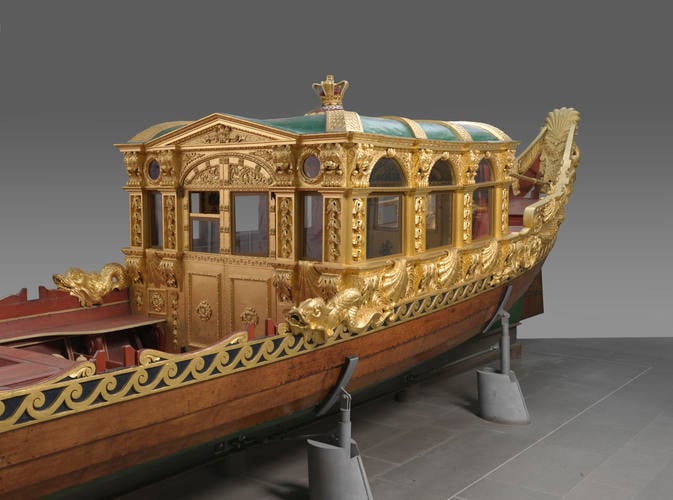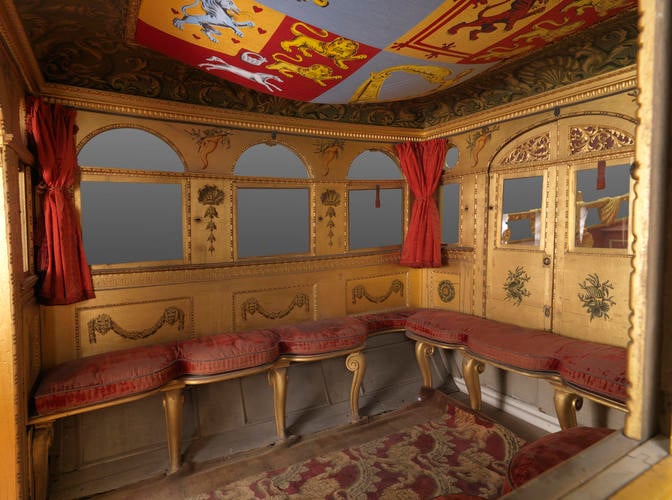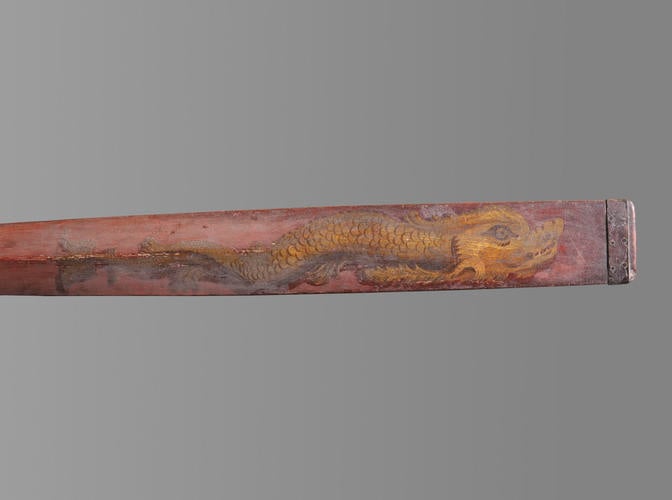Royal Barge 1731-32
Gilt wood and iron | 19.2 m long (whole object) | RCIN 69797

William Kent (1684-1748)
Royal Barge 1731-32
Royal Collection Trust/© His Majesty King Charles III 2022. Photographer:Bruce White

William Kent (1684-1748)
Royal Barge 1731-32
Royal Collection Trust/© His Majesty King Charles III 2022. Photographer:Bruce White

William Kent (1684-1748)
Royal Barge 1731-32
Royal Collection Trust/© His Majesty King Charles III 2022. Photographer:Bruce White

William Kent (1684-1748)
Royal Barge 1731-32
Royal Collection Trust/© His Majesty King Charles III 2022. Photographer:Bruce White

William Kent (1684-1748)
Royal Barge 1731-32
Royal Collection Trust/© His Majesty King Charles III 2022. Photographer:Bruce White

William Kent (1684-1748)
Royal Barge 1731-32
Royal Collection Trust/© His Majesty King Charles III 2022. Photographer:Bruce White

William Kent (1684-1748)
Royal Barge 1731-32
Royal Collection Trust/© His Majesty King Charles III 2022. Photographer:Bruce White

William Kent (1684-1748)
Royal Barge 1731-32
Royal Collection Trust/© His Majesty King Charles III 2022. Photographer:Bruce White

William Kent (1684-1748)
Royal Barge 1731-32
Royal Collection Trust/© His Majesty King Charles III 2022. Photographer:Bruce White









-
The Royal Barge is a clinker-built open rowing boat. The prow, stern and rail are carved and gilded with the royal coat of arms and Prince of Wales feathers among riotous sea-creatures, swags and Vitruvian scrolls. The State House, surmounted by a crown, is fitted with upholstered seating, carpet and painted ceiling. The barge is accompanied by 24 oars.
The Royal barge was built in 1732 for Frederick, Prince of Wales by the shipwright John Hall to a design by the architect William Kent. The work was supervised by Lord Baltimore, the Prince's friend and adviser. The original intention was to launch the barge on the Prince's birthday in January 1732, but in fact the bill for £1,002 9s 1d from John Hall was not submitted until July of that year. The full list of workmen includes James Richards, the sculptor and carver who succeeded Grinling Gibbons as Master Carver to the Crown, and Paul Petit, the gilder, as well as a joiner, laceman, mercer, upholsterer, sailmaker, oar-maker, glassman and locksmith.
The barge was designed to be rowed by 21 oarsmen and a Barge-Master. The first Barge Master was Mr Hill, who was appointed along with 12 Watermen by the prince in December, 1731. On 1 April 1732 it was launched from Hungerford to Whitehall, carrying distinguished travellers (though not the royal family). Its first outing with royal occupants was to take Frederick with his mother, Queen Caroline and five sisters, from Chelsea Hospital to Old Somerset House to view paintings from the Royal Collection undergoing restoration. They were attended by Officers and Ladies in a second barge and a group of musicians in a third. Frederick used the barge for a number of pleasure trips, including, in 1749, one in which the entire barge was decorated in the chinoiserie style and the bargemen dressed in orientally inspired uniforms. The barge continued in use until 1849 in various state processions - its last outing was to carry Prince Albert, the Princess Royal and the Prince of Wales to the opening of the Coal Exchange, on which occasion the bargemaster was Lord Adolphus Fitzclarence, son of William IV with the actress Dorothea Jordan and master of the royal yacht. This was the first royal engagement Prince Albert had undertaken without his wife, and the first time he was able to use the sovereign's official transport without her. After this it was placed at the Royal Barge House in Windsor Great Park. In 1883 Queen Victoria loaned the barge to the Science Museum. In 1925 it was transferred to the V&A Museum, and in 1951 it was placed on loan to the National Maritime Museum. Kent's designs for the barge are held in the Royal Institute of British Architects.Provenance
Built in 1732 for Frederick, Prince of Wales
-
Creator(s)
(designer)(maker)Acquirer(s)
-
Medium and techniques
Gilt wood and iron
Measurements
19.2 m long (whole object)
Category
Object type(s)







